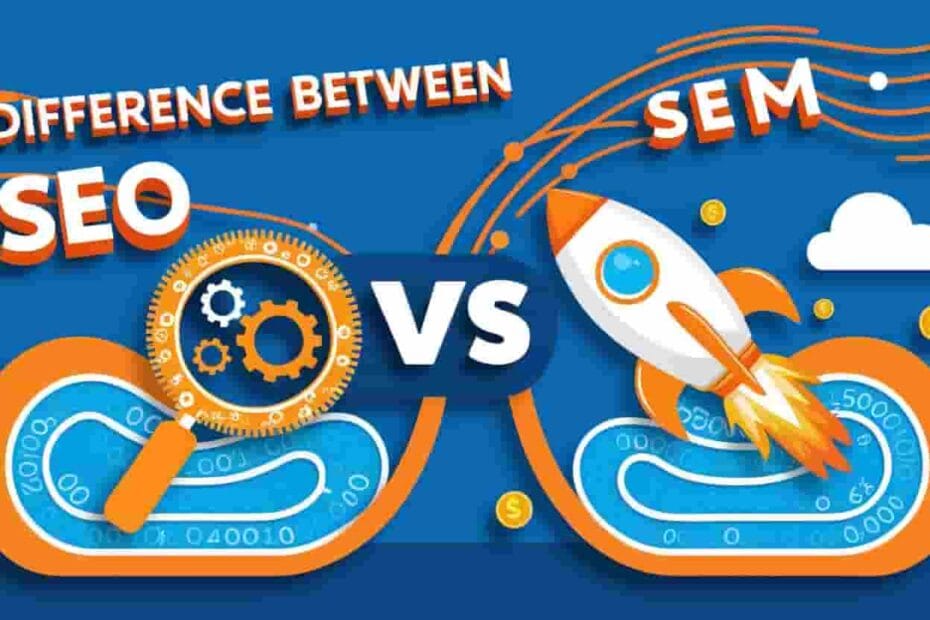In the competitive world of digital marketing, SEO (Search Engine Optimization) and SEM (Search Engine Marketing) are two essential strategies that can elevate your online presence. While both aim to increase visibility and drive traffic to your website, their approaches, timelines, and impacts differ significantly. This blog delves into the fundamental differences between SEO and SEM to help you choose the right strategy for your business.
What is SEO?
SEO stands for Search Engine Optimization. It is the process of optimizing your website to rank organically in search engine results pages (SERPs) for specific keywords.
Key Elements of SEO:
- On-Page SEO: Includes keyword optimization, meta tags, headers, and content quality.
- Off-Page SEO: Focuses on link-building, guest blogging, and social signals.
- Technical SEO: Involves website speed, mobile-friendliness, and schema markup.
- Content Creation: Regular blogs, articles, and videos with keyword-rich content.
Advantages of SEO:
- Organic traffic is cost-effective.
- Builds long-term credibility and trust.
- Enhances user experience.
Challenges of SEO:
- Results take time, often several months.
- Constant algorithm updates by search engines.
What is SEM?
SEM stands for Search Engine Marketing. It includes paid advertising to appear on search engines through ads, typically pay-per-click (PPC).
Key Elements of SEM:
- Google Ads Campaigns: Text ads, display ads, shopping ads, and video ads.
- Bid Management: Paying for ad placement based on keyword competitiveness.
- Targeting Options: Geographic, demographic, and behavior-based targeting.
Advantages of SEM:
- Instant visibility and traffic.
- Precise targeting of specific audiences.
- Measurable ROI with analytics tools.
Challenges of SEM:
- Requires a continuous budget.
- May not guarantee long-term visibility.
Key Differences Between SEO and SEM
| Aspect | SEO | SEM |
|---|---|---|
| Nature | Organic strategy | Paid strategy |
| Timeline | Long-term (months to show results) | Short-term (immediate results) |
| Cost | Low ongoing costs (time and resources) | High ongoing costs (ad spend) |
| Visibility | Limited to organic SERPs | Paid ads appear at the top of SERPs |
| Sustainability | Results last longer without continuous effort | Results stop as soon as ads are paused |
| Audience | Broad reach for organic searches | Narrowed targeting with ad customization |
When to Use SEO
- Startups or Small Businesses: With limited budgets but long-term growth goals.
- Content-Driven Brands: Relying on blogs, tutorials, or videos to drive traffic.
- Local Businesses: To rank organically for local search queries like “best cafe near me.”
When to Use SEM
- Launching a New Product or Service: To create immediate awareness.
- Seasonal Campaigns: Such as holiday sales or limited-time offers.
- Highly Competitive Niches: Where organic ranking may take too long to achieve.
Can SEO and SEM Work Together?
Absolutely! A hybrid approach can yield the best results:
- Use SEM for immediate traffic while working on long-term SEO strategies.
- Analyze SEM data to identify high-converting keywords for your SEO efforts.
- Employ retargeting ads to re-engage users who visited via organic search.
Understanding the difference between SEO and SEM is critical for crafting a tailored digital marketing strategy. While SEO focuses on organic growth and trust, SEM is ideal for rapid traffic and conversions. At OrgoDigital, we specialize in both SEO and SEM, helping businesses maximize their online presence. Contact us today to discover the right approach for your brand!

